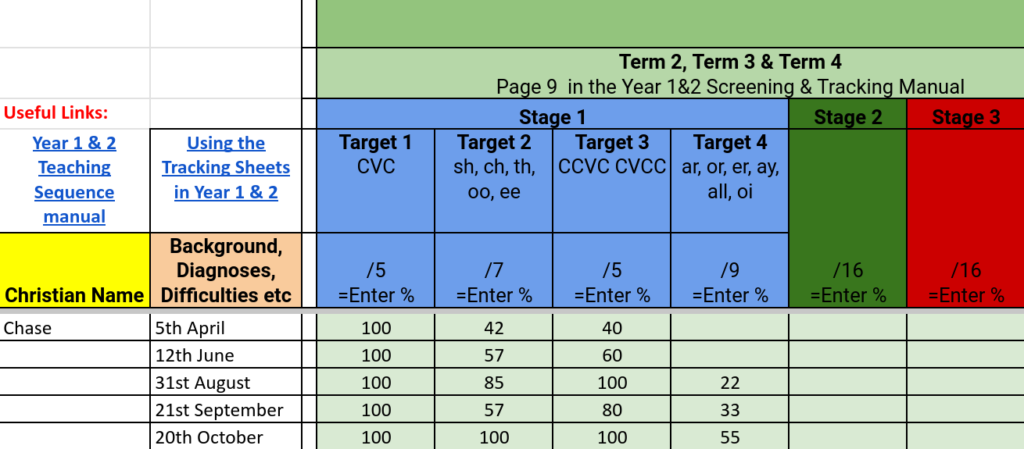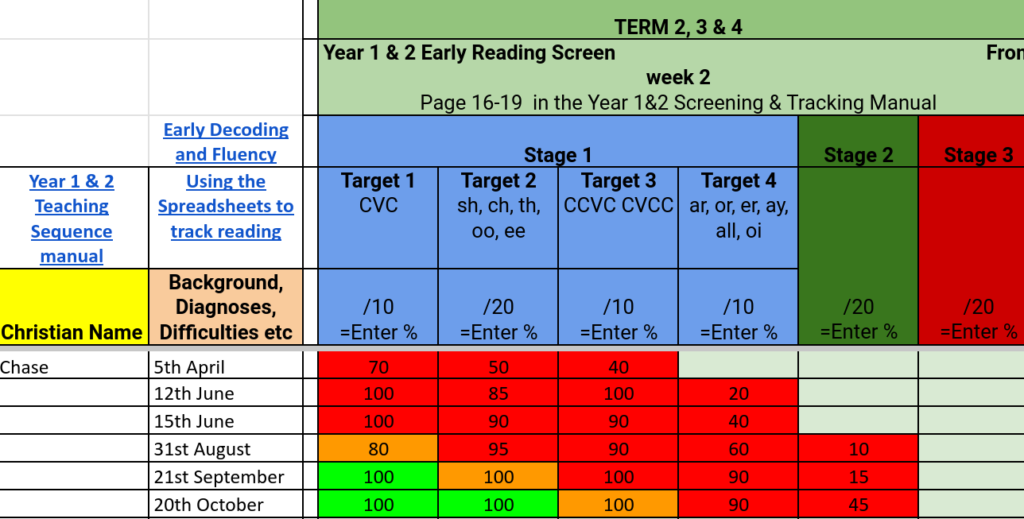Tutors Presenting PLD Programs
PLD’s Structured Synthetic Phonics (SSP) programs, developed in collaboration with speech pathologists, are designed to strengthen oral language and literacy skills. Tutoring with PLD’s SSP programs can be delivered for early intervention to prevent literacy difficulties, as well as targeted support to address existing delays. PLD provides tutors with an evidence-based approach that makes it easy to structure sessions, track progress, and demonstrate measurable gains in reading, spelling and writing.
Navigate to the relevant sections using the tabs below:
In classrooms, PLD recommends administering both the Spelling Placement and Early Reading Screens at least once per term. However, because tutors work with students individually, more frequent monitoring is recommended. PLD’s Tracking Sheets can be adapted for this purpose, allowing tutors to record skill development after sessions, clearly demonstrate gains to parents, and fine-tune instruction to each student’s needs.
For example, the following Year 1 student is screened monthly. This regular testing not only demonstrates the progress being made but also provides the insight needed to adjust and personalise the delivery of PLD’s SSP programs.


While tutoring is less common in the Early Years, it can be valuable when children’s skills development begins to deviate from the progress of their age-matched peers. Early intervention at this stage helps prepare children for their first year of formal schooling and may help prevent later literacy difficulties. Using PLD’s Early Years screening tools, tutors can devise an individualised teaching plan to target these skills. Below is a range of resources designed specifically for this age group.
While tutoring is less common in the Foundation year, it can be valuable when children’s skills development begins to deviate from the progress of their age-matched peers. Early intervention at this stage helps prevent later literacy difficulties. Using PLD’s Foundation screening tools, tutors can devise an individualised teaching plan to target these skills. Below is a range of resources designed specifically for this age group.
In Year 1 & 2, tutoring typically focuses on intensive support for students whose skills are falling behind their age-matched peers. Using PLD’s Year 1 & 2 screening tools, tutors can devise an individualised teaching plan. Below is a range of resources designed specifically for this age group.
Tutoring in the middle and upper primary years typically focuses on intervention for students still developing core skills in reading, spelling and writing. Tutors should be guided by PLD’s Stages of Development, rather than the student’s chronological age. Using PLD’s Spelling Placement Tests to establish functional literacy levels, tutors can then implement the Junior & Middle Primary Time-Savers and Phonic Dictation programs targeting PLD’s Stages 1 – 4.


















